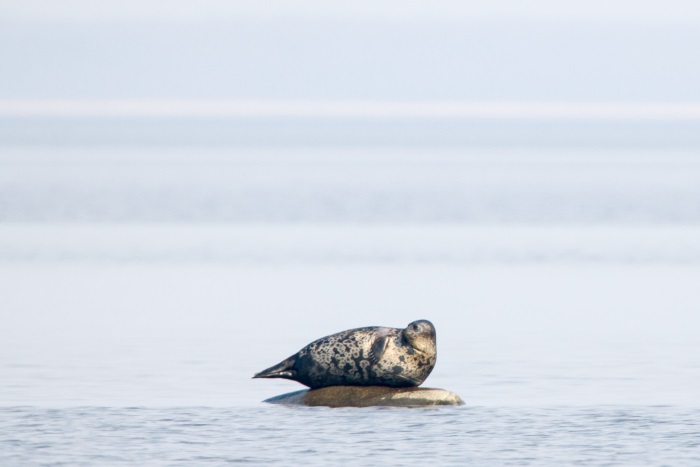Natura 2000 sites and bird areas
Natura 2000 is the European network of protected areas (consists of the conservation and bird areas), the purpose of which is to ensure the protection of rare or endangered birds, animals and plants and their habitats.
Estonia’s Natura 2000 sites were selected by the time when Estonia became member of the EU in 2004. As an EU member state, Estonia must maintain the preservation of natural values in Natura 2000 areas.
In March 2015, Estonia's Natura 2000 network consisted of 66 bird areas with a total area of 12,661 sq km and 542 natural areas with a total area of 11,668 sq km. As Estonia's bird areas and nature areas largely overlap, the Estonian Natura 2000 network has a total surface area of 14,836 sq km. Of Natura 2000 sites, 7,616 sq km, ie 51.3% are located at sea, Lake Peipsi and Lake Võrtsjärv, and 7,220 sq km, ie 48.7% are on land. Natura sites account for 16.6% of the territory of Estonia.
In order to ensure the protection of nature values protected by the Natura network, management plans must be drawn up for the areas in which conservation activities are planned.

Ringed seal (Pusa hispida). Photo by Arne Ader
RAMSAR Convention
The Ramsar Convention is an international agreement on the protection and use of wetlands. Estonia joined the Ramsar Convention in 1993. Previously, the list of Ramsar sites included the Matsalu Nature Reserve, which was added in 1976 as part of the USSR. According to the Ramsar Convention, wetlands include marshes (both natural and artificial) and water areas, both with standing and flow water, permanent or temporary, freshwater, brackish water or salt water, including marine areas with a depth of less than six meters. Originally, this agreement was specifically designed to protect waterfowl birds and create for them a network of shelter sites. However, while the text of the Convention was being drawn up it became clear that the protection of wetlands as a living environment is equally important.
According to the Ramsar Convention, Estonia has currently the following wetlands of international importance:
1) Matsalu National Park (added to Ramsar sites as of 29.03.1994) - 48,610 ha;
2) Alam-Pedja Nature Reserve (added on June 17, 1997) - 34,220 ha;
3) Emajõe Suursoo and Piirissaar (added on June 17, 1997) - 32,600 ha;
4) Endla Nature Reserve (added on June 17, 1997, extended in 2007) - 10,110 ha;
5) Hiiumaa small islands and the Käina bay (added on 17.06.1997) - 17,700 ha;
6) Muraka nature reserve (added on June 17, 1997, expanded in 2007) - 13,980 ha;
7) Nigula Nature Reserve (added on June 17, 1997, expanded in 2007) - 6,398 ha;
8) Puhtu-Laelatu-Nehatu wetland (added on June 17, 1997) - 4,640 ha;
9) Soomaa National Park (added on June 17, 1997, expanded in 2007) - 39,639 ha;
10) Vilsandi National Park (added on June 17, 1997) - 24,100 ha;
11) Laidevahe nature reserve (added on March 31, 2003) - 2,424 ha;
12) Sookuninga Nature Reserve (added on 03.02.2006) - 5,869 ha;
13) Luitemaa (added on January 27, 2010) - 11,240 ha;
14) Agusalu (added on January 27, 2010) - 11,000 ha;
15) Leidisoo (added on January 27, 2010) - 8,178 ha;
16) Lihula (added on January 27, 2010) - 6,620 ha;
17) Haapsalu-Noarootsi (added 08.02.2011) - 29,380 ha.
The Berne Convention
The purpose of the Berne Convention is to preserve European wildlife and natural habitats and promote international cooperation for the protection of the environment, with a particular focus on the protection of endangered species, including endangered migratory species.
In the framework of the Berne Convention, a European Protected Area Diploma will be awarded to biodiverse and well-organized protected areas. In Estonia and throughout the Baltics, there is only one area recognized by the European Protected Areas - Matsalu National Park. This recognition was granted to the Matsalu National Park in 2003.
HELCOM
HELCOM or the Helsinki Commission Convention is an agreement for the protection of the marine environment of the Baltic Sea Area, concluded in 1995. The creation of a network of protected areas in the Baltic Sea, whose protection must be guaranteed by national safeguards, is important in the area of biodiversity. Estonia ratified the convention in 1995.
In Estonia, seven areas are designated as areas of protection for the Baltic Sea, ie HELCOM areas:
1) Lahemaa;
2) Väinameri;
3) Hiiu low;
4) Vilsandi;
5) Pakri;
6) Kura straits;
7) Gulf of Pärnu.
IBA (Important Bird Areas)
IBA areas include important bird areas that are designed to ensure the survival of viable bird populations around the world. IBA areas are designated by BirdLife International, an international bird protection organization. As birds are often indicator species of good biodiversity, despite the fact that IBA areas have been selected based on bird species, their protection also contributes to the protection of biodiversity. There are 64 IBA areas in Estonia.
The World Conservation Union IUCN
IUCN is an international organization that brings together national governments, non-governmental associations as well as international organizations. This is an organization where researchers and practitioners work together with officials and politicians. IUCN has defined the international categories on protection regimes of protected areas.
Compliance of zones of Estonian protected areas with IUCN categories:
IA - a strict nature reserve
IB - a natural part of a conservation zone that is not maintained
III - an individual protected natural objects
IV - part of the conservation zone that is being maintained and is also an important area for the conservation of the species
V - landscape protection part of the conservation zone and limited management zones, parks